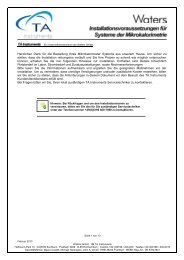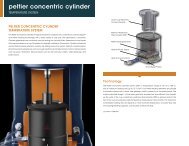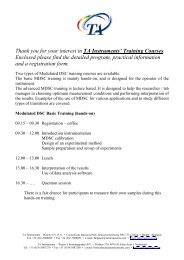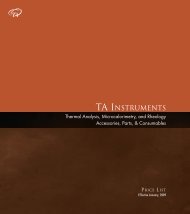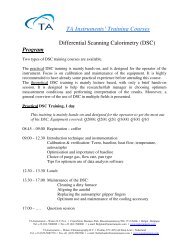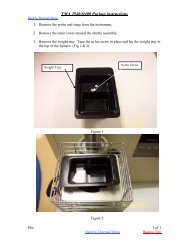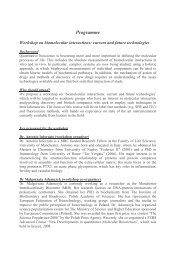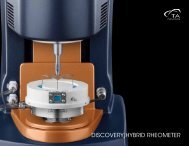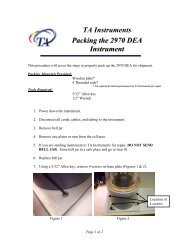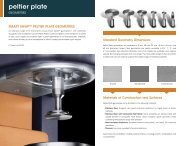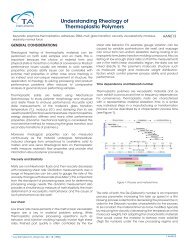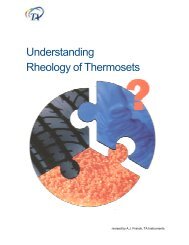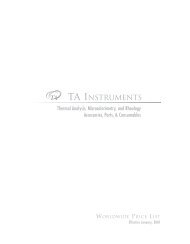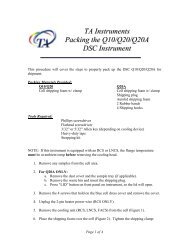discovery hybrid rheometers temperature systems ... - TA Instruments
discovery hybrid rheometers temperature systems ... - TA Instruments
discovery hybrid rheometers temperature systems ... - TA Instruments
Create successful ePaper yourself
Turn your PDF publications into a flip-book with our unique Google optimized e-Paper software.
UHP and ATCTEMPERATURE PERFORMANCESilicone Oil Viscosity Standard Response toTemperature changes in UHP10.00Material response exactly follows<strong>temperature</strong> profile110.0100.0UHP and ATC Temperature PerformanceThe true test of any rheometer <strong>temperature</strong> control system is to comparesample response to the reported system <strong>temperature</strong>. This evaluation isespecially important for a combined lower Peltier device with intimatecontact heating and an upper non-contact heating device. In this situation,the top plate heats more slowly than the bottom plate. Because the topand bottom plates heat at different rates, the sample <strong>temperature</strong> differsgreatly from the reported system <strong>temperature</strong>. In competitive <strong>systems</strong>,the sample response lags the <strong>temperature</strong> profile, requiring the user todetermine system-based thermal equilibration times and program longdelays. This issue is eliminated with <strong>TA</strong>’s unique UHP and ATC technologies,by continuously controlling and matching the upper and lower plate<strong>temperature</strong>s. This accurate response is demonstrated in the followingfigures with simple oscillation time sweep measurements.The Silicone Oil Viscosity Standard in the top figure shows that the complexviscosity response exactly follows the reported <strong>temperature</strong> profile, provingthat there is no lag between set-point and real sample <strong>temperature</strong>. Asimilar test is shown for a sample of Asphalt binder which, according tofederal standards, cannot be tested until <strong>temperature</strong> is fully equilibratedto within 0.1 °C of the set point. The asphalt data show that as soon asthe <strong>temperature</strong> is within 0.1 °C, the viscosity of the asphalt binder is fullyequilibrated and no change is seen in the viscosity even after 20 additionalminutes.By matching upper and lower <strong>temperature</strong> and heating rates, and activelycontrolling the upper plate with patented technology, <strong>TA</strong> provides the mostadvanced and accurate non-contact heating technology.|η*| (Pa.s)Temperature (˚C)1.0000.100090.080.070.060.050.040.060.0 65.0 70.0 75.0 80.0 85.0 90.0 95.0 100.0 105.07.6 min84.9 ˚Ctime (min)Asphalt Binder Response to Temperature Change in UHP90.080.070.060.050.01.000E61.000E5100001000Temperature (˚C)|η*| (Pa.s)30.07.6 min19.17 Pa.s17.8 min19.30 Pa.s27.7 min19.27 Pa.s100.020.010.000 5.0 10.0 15.0 20.0 25.0 30.0time (min)14



